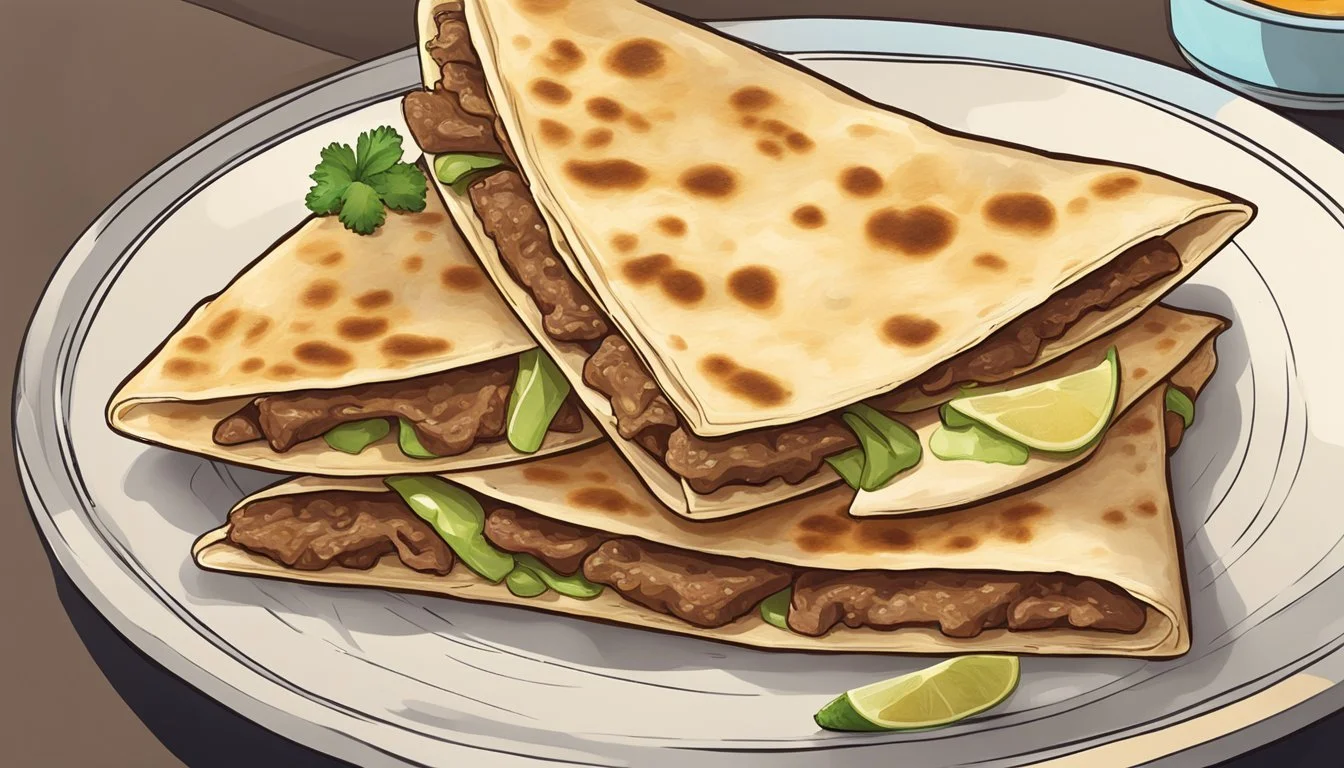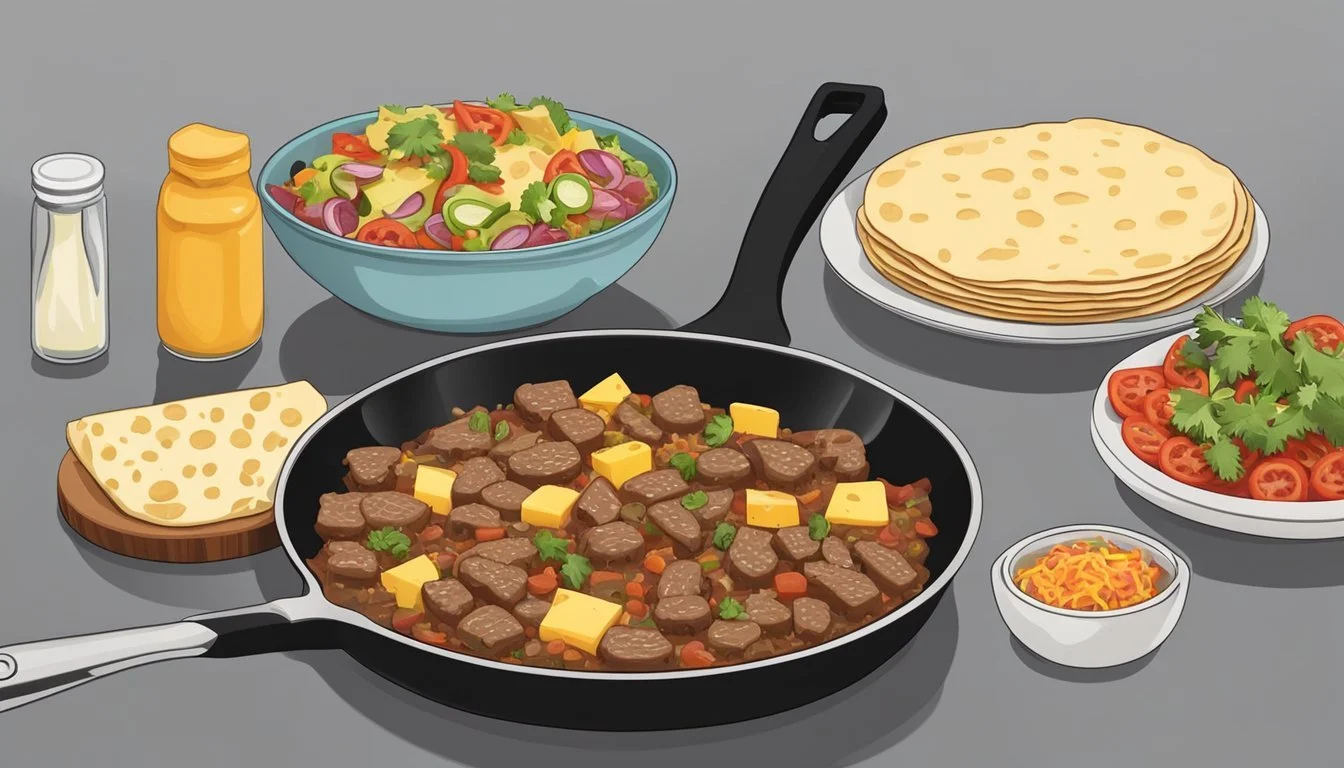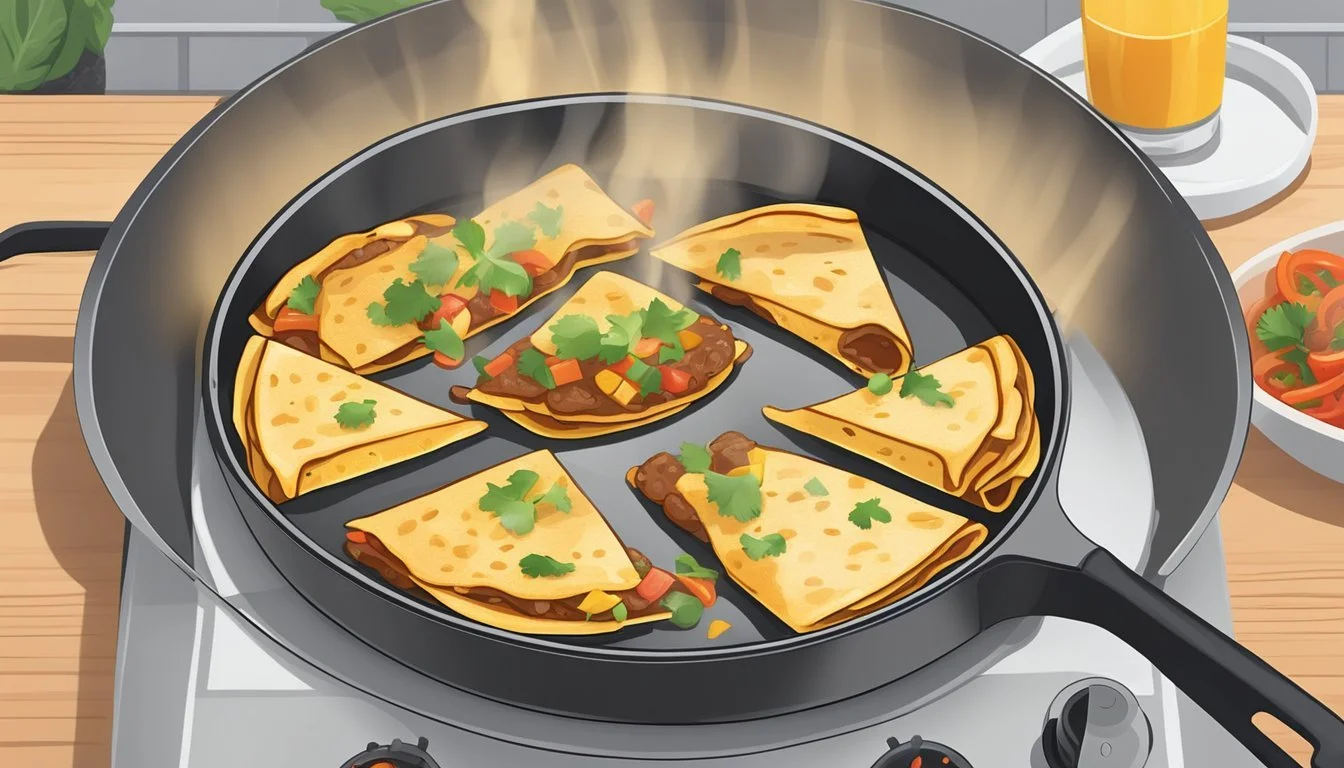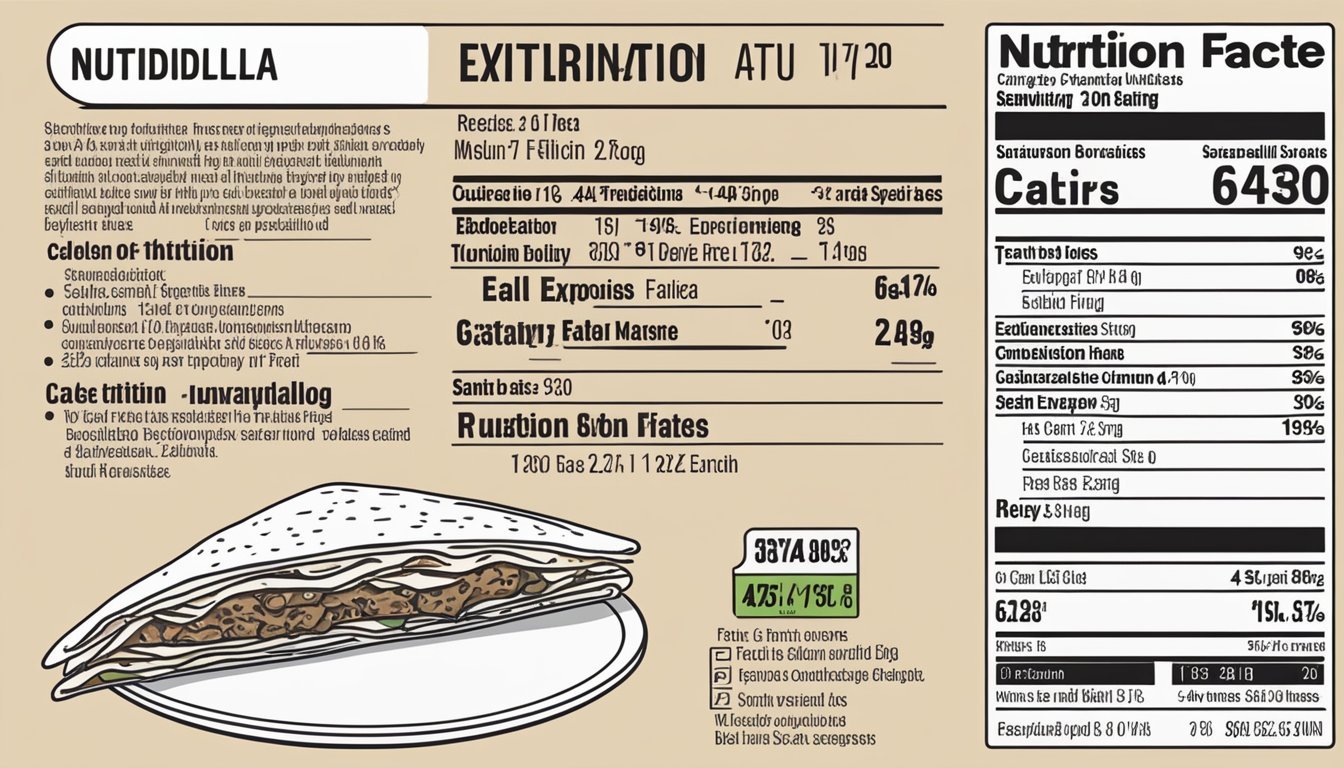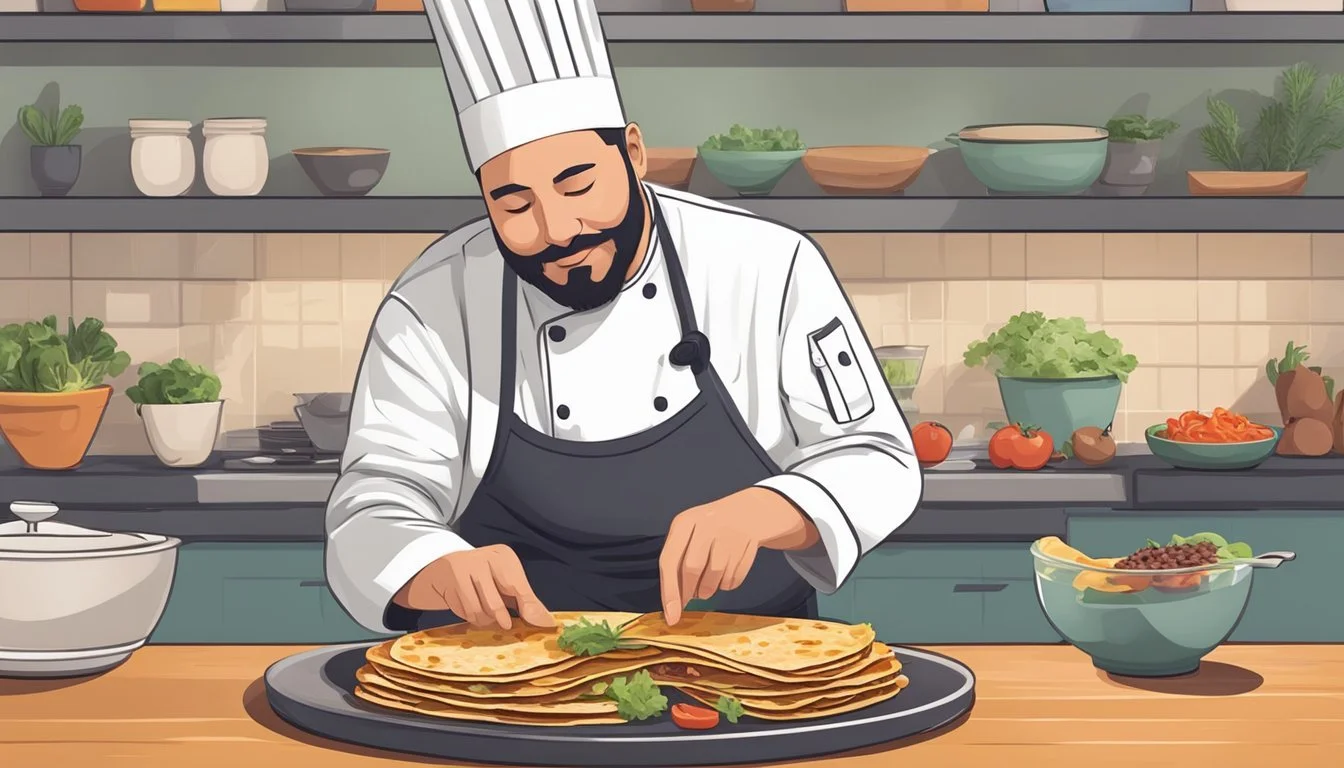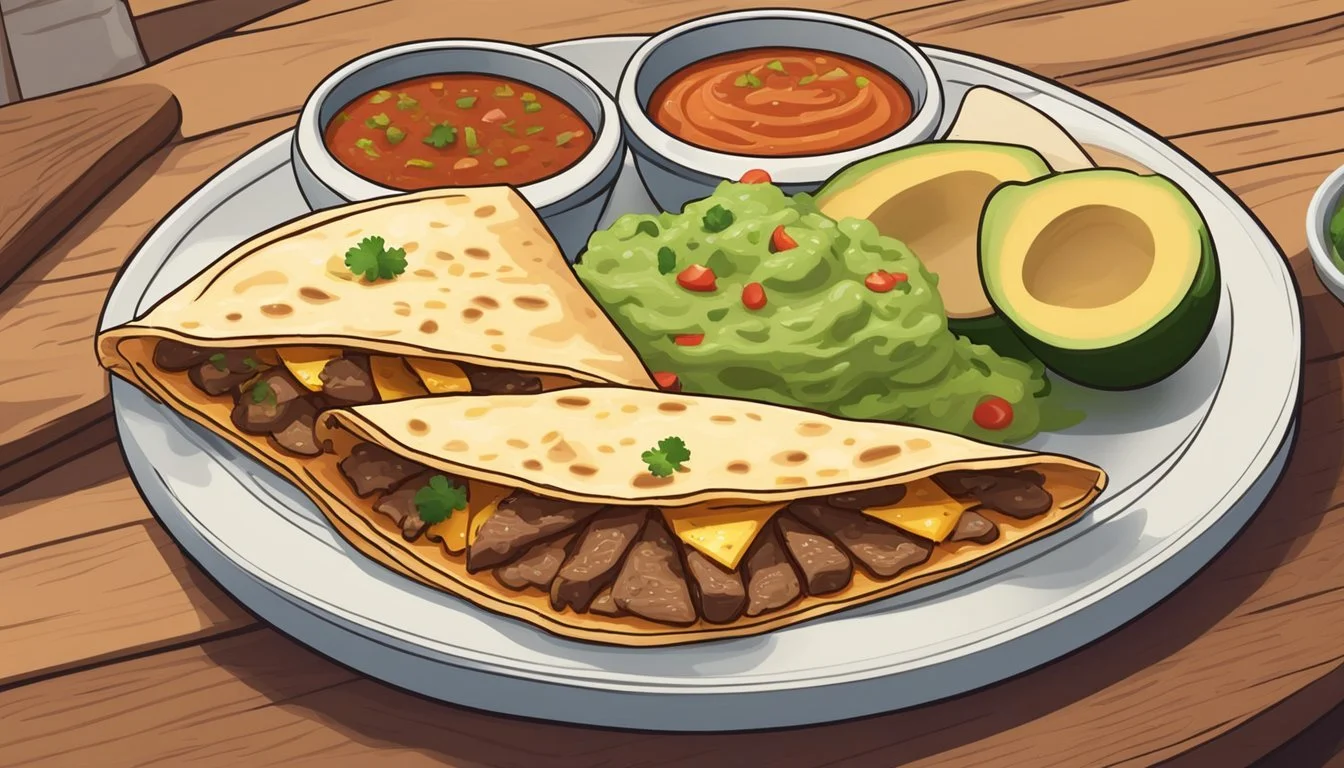How Long Do Beef Quesadillas Last?
Storage Tips & Safety Guidelines
Beef quesadillas are a delicious and convenient meal option, but it's important to know how long they last to ensure you're eating them at their best. Properly stored, beef quesadillas can last for up to 3-4 days in the refrigerator. For longer storage, they can be kept in the freezer for up to 2 months without compromising on flavor or texture.
When storing, it's crucial to use airtight containers or plastic wrap to avoid exposure to air, which can lead to quicker spoilage. Additionally, when reheating, make sure they reach an internal temperature of 165°F to ensure safety and maintain their savory taste.
Knowing how to properly store and handle beef quesadillas not only prolongs their shelf life but also ensures you're enjoying a meal that's both safe and delicious. These simple steps can help you savor your favorite quesadilla anytime without worry.
Understanding Quesadillas
Quesadillas are a versatile dish rooted in Mexican cuisine, typically featuring tortillas filled with cheese and optional additional ingredients. They offer flexibility in fillings and cooking methods, making them suitable for various preferences.
Ingredients and Variations
Quesadillas primarily contain tortillas, cheese, and a filling, often beef, chicken, or vegetables. Common cheeses include cheddar, Monterey Jack, and queso blanco.
Beef: Ground beef seasoned with garlic, cumin, and pepper adds a flavorful punch.
Chicken: Shredded chicken, lightly spiced, is a popular alternative.
Vegetables: Options like peppers, onions, and spinach make excellent vegetarian fillings.
Quesadillas can be customized with different combinations of these ingredients to suit various tastes.
Beef Quesadilla Essentials
To make a beef quesadilla, start with a flour tortilla.
Cooking the Beef: Brown the ground beef in olive oil, adding garlic, cumin, and other seasonings.
Assembling the Quesadilla: Spread grated cheese over the tortilla, then add the beef mixture and more cheese.
Cooking the Quesadilla: Fold the tortilla in half and cook in a skillet until both sides are golden brown and the cheese is melted.
Additional garnishes like salsa, sour cream, or guacamole can enhance the flavor.
The Role of Tortillas in Quesadillas
Flour tortillas are commonly used because they hold up well to fillings and heat.
Texture: They should be soft yet sturdy.
Size: Opt for medium or large tortillas for easier handling and better filling distribution.
Cooking: A preheated skillet with a light amount of olive oil helps achieve the perfect crispy exterior.
Tortillas act as the base for the quesadilla, contributing significantly to the dish’s overall texture and flavor.
The combination of well-seasoned fillings and perfectly cooked tortillas makes a satisfying quesadilla that can be enjoyed fresh or stored for later consumption.
Preparing Beef Quesadillas
Making delicious beef quesadillas involves selecting high-quality ingredients, following precise recipe steps, and using effective cooking techniques. This ensures that the quesadillas are flavorful, crispy, and cooked to perfection.
Choosing Quality Ingredients
The foundation of great beef quesadillas starts with quality ingredients. Ground beef should be fresh and ideally 80/20 lean-to-fat ratio to balance juiciness and flavor. Monterey Jack, cheddar, and mozzarella cheeses provide the best mix of meltiness and taste, while olive oil helps achieve a golden brown and crispy texture.
Seasonings are crucial. Taco seasoning can add a balanced flavor profile, but be mindful of sodium content. Onions and bell peppers enhance texture and taste. Using fresh tortillas improves the overall quality of the quesadilla.
Beef Quesadilla Recipe Steps
Cook the Ground Beef: In a large skillet over medium heat, cook and crumble the ground beef until browned, then drain excess fat.
Season the Beef: Add taco seasoning and a bit of water as per the package instructions. Stir well and let it simmer for a few minutes.
Prepare the Vegetables: Sauté finely chopped onions and bell peppers in olive oil until they are soft and golden brown. Combine them with the seasoned beef.
Assemble Quesadillas: Place a tortilla in a skillet, sprinkle a mixture of Monterey Jack, cheddar, and mozzarella cheese over half the tortilla, add the beef mixture, then fold.
Cook the Quesadillas: Cook each side until the tortilla is golden and crispy, and the cheese is melted and gooey.
Cooking Techniques for Best Results
A heavy-bottomed skillet or a non-stick pan ensures even heat distribution, preventing burning. Cooking over medium heat allows the quesadillas to become crispy without burning the tortillas. Using a minimal amount of olive oil or butter can enhance the crispiness.
Alternatively, baking quesadillas on a sheet pan in the oven at 425°F achieves similar results, especially when buttering the sheet lightly. This method can be more convenient for larger batches. For best texture, always allow the quesadillas to cook until they develop a golden brown crust, ensuring the filling is hot and the cheese is fully melted.
Storing Beef Quesadillas
Proper storage is essential to maintain the freshness and safety of beef quesadillas. Understanding how to refrigerate, use airtight containers, and freeze quesadillas can help you make the most of your leftovers.
Refrigeration and Shelf Life
Beef quesadillas can last up to 3-4 days in the fridge. It is crucial to store them in an airtight container to prevent moisture loss and contamination.
To refrigerate, allow the quesadillas to cool to room temperature before transferring them. Placing hot food directly in the refrigerator can raise the internal temperature, affecting other stored items.
Labeling the container with the storage date helps keep track of how long they have been in the fridge, ensuring they are consumed within a safe timeframe.
Best Practices for Airtight Storage
Using airtight containers is imperative for maintaining the quality of beef quesadillas. Options include resealable plastic bags, glass containers with rubber seals, or heavy-duty freezer bags.
Before sealing, remove as much air as possible to prevent freezer burn and moisture buildup. This step also helps retain texture and flavor.
When stacking multiple quesadillas, place a piece of parchment paper between each. This prevents sticking and makes it easier to separate individual pieces.
Freezing and Thawing Quesadillas
For longer-term storage, freezing is the best option. Properly wrapped quesadillas can last up to 4 months in the freezer.
First, perform a pre-freeze by placing the quesadillas on a baking sheet in a single layer for 1-2 hours. Once partially frozen, transfer each quesadilla to an airtight container or heavy-duty freezer bag.
To thaw, move the quesadillas from the freezer to the fridge the night before. For a quicker option, use the microwave's defrost setting. Always reheat until hot before eating to ensure food safety.
By following these storage tips, you can enjoy beef quesadillas while keeping them fresh and delicious.
Reheating Beef Quesadillas
Reheating beef quesadillas can be done using several methods, each ensuring the dish retains its delicious texture and flavor. The primary methods include using an oven, air fryer, or skillet, with specific tips to maintain safety during reheating.
Methods for Reheating
Oven:
Preheat the oven to 350°F (175°C).
Place the beef quesadillas directly on the oven rack or a baking sheet.
Bake for about 10 minutes or until heated thoroughly.
Air Fryer:
Let quesadillas sit at room temperature for about 15 minutes.
Preheat the air fryer to 350°F.
Spray the quesadillas lightly with cooking oil.
Reheat for approximately 3-5 minutes.
Skillet:
Heat a non-stick skillet on medium heat.
Add a light coat of oil if desired.
Place the quesadilla in the skillet and heat each side for 1-2 minutes.
Maintaining Texture and Flavor
Avoid overcooking to keep the beef quesadillas crispy outside and soft inside. Use fresh oil for a non-stick skillet to prevent greasiness. When using an oven, avoid overcrowding the rack to ensure even heat distribution. In an air fryer, a light oil spray helps to crisp the outer layer without drying out the filling.
Tip: For extra freshness, add fresh toppings like salsa or guacamole after reheating.
Safety Tips for Reheated Foods
Ensure beef quesadillas are reheated to an internal temperature of at least 165°F to prevent foodborne illnesses. Use a food thermometer to check the temperature. Refrigerate any leftover quesadillas within two hours of cooking to reduce bacterial growth. Avoid reheating multiple times as this can increase the risk of contamination and degrade the dish's texture and flavor.
Implementing these methods and tips will help preserve the quality and safety of your beef quesadillas during reheating.
Nutritional Information
Beef quesadillas provide a mix of essential nutrients, making them a flavorful and protein-rich meal. This section will delve into their caloric content, macronutrients, and the presence of vitamins and minerals.
Calories and Macronutrients
A typical beef quesadilla contains approximately 310 calories. The macronutrient distribution is often balanced to some extent, with key components being 23% carbohydrates, 51% fat, and 27% protein.
Carbohydrates: 23%
Protein: 27%
Fat: 51%
The high fat content, primarily from saturated fats, can be significant, contributing to more than half of the total calories. This can be important for those monitoring their dietary fat intake.
Vitamins and Minerals Presence
Beef quesadillas are also a source of various vitamins and minerals. They typically contain 36% of the Daily Value (DV) for protein, making them a good protein source. Additionally, they provide nutrients like calcium and potassium.
Amounts of essential minerals:
Calcium: present in cheese
Potassium: found in beef and vegetables
Other vital nutrients include cholesterol and a small amount of dietary fiber. While the cholesterol levels can be a point of concern for some, the combination of these nutrients makes beef quesadillas a valuable meal option.
Serving and Garnishing
Serving beef quesadillas with the right accompaniments enhances the overall experience. From delightful side dishes to tasty toppings, making the meal complete is all about choosing complementary flavors and textures.
Complementing Side Dishes
Beef quesadillas pair well with a variety of side dishes. Mexican rice and refried beans are classic choices that provide a hearty balance. For a fresher option, a pico de gallo or homemade guacamole can add a refreshing contrast to the savory quesadillas.
Consider adding a simple avocado salad with lime and cilantro. For a vegetarian twist, serving alongside roasted or grilled veggies, such as bell peppers and onions, can add flavor and texture without overshadowing the main dish.
Topping Selections for Enhanced Flavor
Toppings can significantly elevate the taste of beef quesadillas. Sour cream and salsa are staples that provide a creamy and tangy addition. For those who enjoy a bit of heat, jalapeños or a spicy fajita seasoning can add a kick.
Cilantro and diced onion are excellent for adding freshness. A drizzle of lime juice, some crumbled queso fresco, or even a dollop of guac can make each bite more exciting. These toppings allow for customization, catering to both traditional and adventurous palates.
Creating a Complete Meal
Turning beef quesadillas into a complete meal involves adding proteins and veggies. Consider including a side salad with a variety of greens, topped with tomatoes and onions. Incorporate black beans or corn salad for added heartiness.
For a more substantial dinner, serve the quesadillas with a side of tacos or a sheet pan dinner consisting of roasted potatoes and vegetables. Another option is to offer a mixed platter where guests can personalize their quesadillas with various fillings and accompaniments, ensuring a satisfying and well-rounded meal.
Alternatives and Variations
Quesadillas can be adapted to suit various dietary needs, including vegetarian and gluten-free options. Additionally, creative twists can elevate this classic dish with new flavors and ingredients.
Vegetarian and Gluten-Free Choices
For vegetarians, black beans and roasted vegetables can replace beef. Ingredients like corn tortillas and a mix of cheddar cheese and pepper jack keep the dish satisfying.
Gluten-free alternatives include using certified gluten-free corn tortillas. Ensuring that the rest of the ingredients, such as shredded cheese and any sauces, are also gluten-free is key. Vegetarian quesadillas featuring black beans and vibrant vegetables can provide a substantial and nutritious meal.
Creative Twists on Classic Quesadillas
Innovative versions can include BBQ chicken quesadillas or even shrimp for a seafood twist. For a lighter option, baked quesadillas can be made by assembling the quesadilla on a baking sheet and cooking it in the oven.
Another variation is the cheesy ground beef quesadilla, featuring lean ground beef mixed with multiple types of melty cheese such as cheddar and pepper jack. Adding unique ingredients like caramelized onions or tangy salsa can enrich the flavors.

